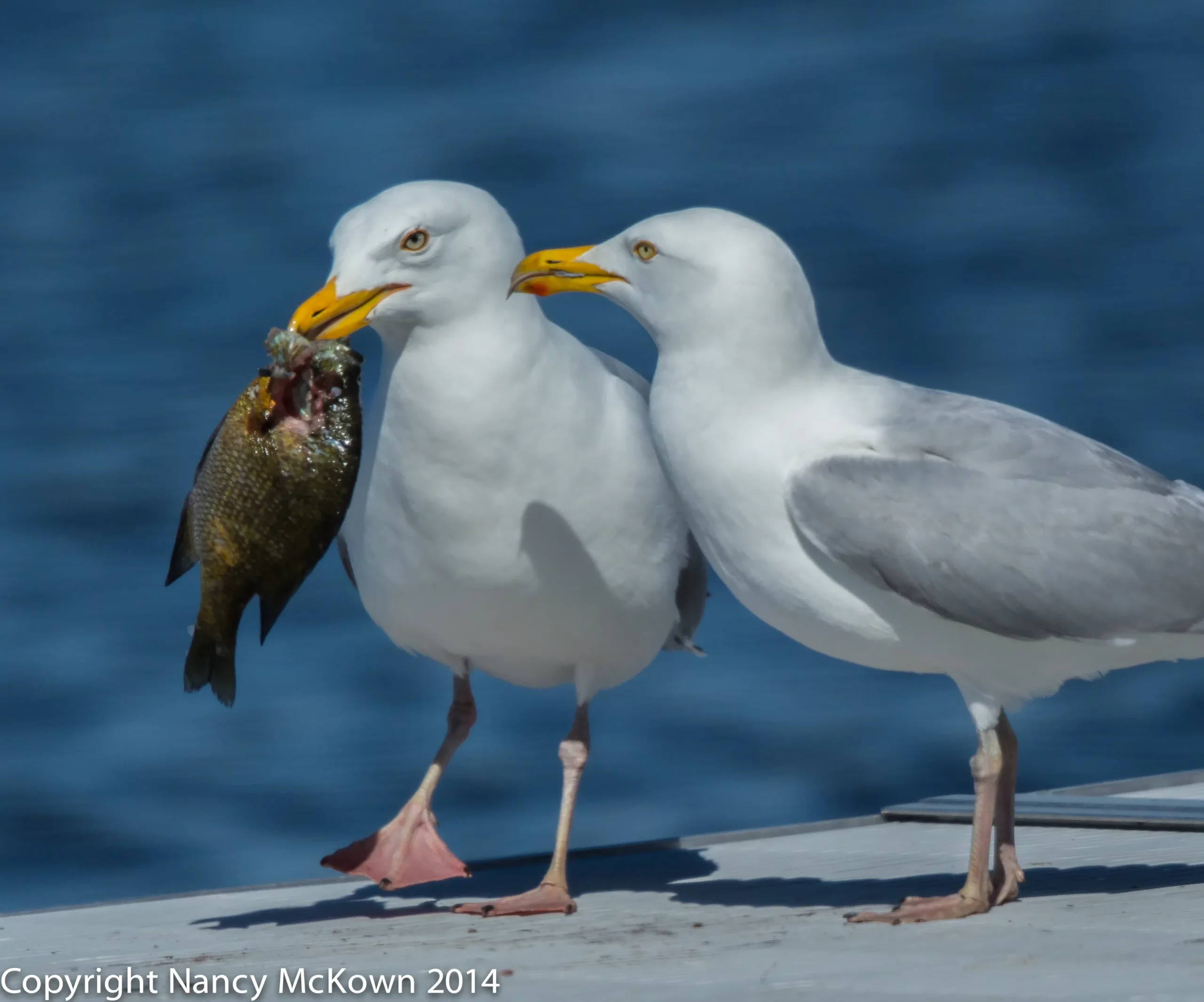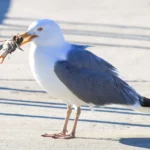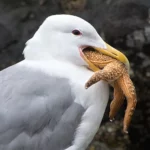Buckle up, bird lovers! We’re diving into a flock of seabirds that might fool you at first glance. They’ve got that signature seagull look – the white, gray, or black feathers, the webbed feet, the hooked beaks – but wait, there’s more! We’re bringing you the ultimate lookalike crew, from the graceful Aleutian tern to the show-stopping black skimmer. These feathered doppelgangers might share some similarities with their seagull cousins but hang on tight as we take a closer look and reveal the hidden secrets that make each one special.
What Bird Looks Like a Sea Gull?
You’re at the beach, enjoying the sun and surf, and you spot a bird soaring overhead. “Look, a seagull!” you might think. But hold on a second! It’s easy to mistake other birds for seagulls, especially if you’re not a bird expert. Let’s dive in and learn how to tell these feathered friends apart!
The Usual Suspects
A handful of birds are frequently mistaken for seagulls. The most common culprits? Terns, skimmers, and kittiwakes. At first glance, they might all seem like they belong to the seagull family, what with their webbed feet, hooked beaks, and feathers that are usually white, gray, or a mix of both. But don’t be fooled – each bird has its own unique features.
Spotting the Differences
- Size Matters: Seagulls are like the big kids on the block compared to the others. Terns are noticeably smaller and have sleek, streamlined bodies. Skimmers fall somewhere in between.
- Tail Tales: Here’s a handy trick: check out the tail! Terns have a deeply forked tail that looks like a pair of scissors. Seagulls, on the other hand, have a more rounded tail. Skimmers have a more unique tail shape, with a short, forked tail and long, pointed wings.
- Bill Shape: Skimmers are the easiest to pick out because of their incredibly unique, long, and flat bill that looks like someone stretched it out. It’s perfectly designed for skimming the water’s surface to snatch up tasty treats. Terns have sharp, pointed bills, while gulls have more robust, hooked bills.
Where Do They Hang Out?
Seagulls are the ultimate adapters – you’ll find them chilling on the open ocean, cruising along the coast, hanging out by lakes, and even scavenging in landfills. Talk about being adaptable! Terns, on the other hand, prefer to stick closer to the coasts and beaches. Skimmers also love coastal areas and sandy beaches where they can practice their skimming skills.
Dinner Time!
Even the way these birds eat can give away their identity. Seagulls are opportunistic eaters and will happily munch on fish they catch in the air or scavenge for scraps on land. Terns are expert divers and plunge headfirst into the water to grab their meals. And then there are those skimmers, using their special bills to scoop up small fish and crustaceans right from the water’s surface.
Become a Bird Detective!
The next time you’re near the water, take a closer look at the birds around you. Pay attention to their size, tail shape, bill design, and even their behavior. You might be surprised at how many “seagulls” are actually something else entirely!
To learn more about the seabird related to a gull, click here.
Seagull Look-Alikes: How to Tell the Difference
So, you’re out birdwatching, binoculars in hand, and you spot a bird you think is a seagull. It’s got that classic white-and-gray thing going on, hanging out near the water… but something doesn’t seem quite right. Don’t worry, you’re not alone! Lots of birds get mistaken for seagulls because they share similar features. Let’s break down those subtle clues that can help you tell them apart like a pro.
Size Matters, and So Does That Tail!
First things first: seagulls are generally bigger than their look-alikes, like terns and skimmers. Think of a seagull as the “big brother” with a sturdier build and wider wings. Speaking of wings, pay attention to the tail! Seagulls have those classic rounded tails, while terns rock a super cool forked tail that helps them zip and zoom through the air.
Bills Built for Specific Tastes
Now, let’s talk about bills for a second. Seagulls have strong, hooked bills, perfect for snatching up all sorts of goodies. Terns, on the other hand, have pointier bills designed for spearing fish with incredible precision. And then there are skimmers – they’re in a league of their own with that unique lower bill that juts out further than the top one. It’s like having a built-in net for skimming the water’s surface for food!
It’s All About Lifestyle Choices
Where you spot a bird can also provide some major hints about its identity. Seagulls are like the ultimate adapters – they hang out near oceans, lakes, even landfills! Terns are a bit more beach-oriented, preferring those sandy shores. Skimmers, true to their name, love coastlines where they can show off those skimming skills.
Food, Glorious Food!
What a bird eats can tell you a lot about who they are. Seagulls are opportunistic eaters, which basically means they’ll try anything once! Terns, though, are all about that fresh fish diet, diving headfirst into the water to catch their meals. And our buddies the skimmers? They’re content to glide along the surface, using their specialized bills to scoop up tasty treats.
So, there you have it! By paying attention to these subtle but important differences in size, shape, behavior, and even dining preferences, you’ll be well on your way to becoming a seagull (and look-alike) identification expert. Happy birdwatching!
If you’re curious about the what is the most common sea gull, follow this link.
Is It a Seagull or Another Bird? Key Identification Features
Okay, so you’re trying to figure out if that bird hanging out by the water is a seagull. There are definitely some things you can look for to tell them apart from their feathered friends!
First off, think about size. Seagulls are like the linebackers of the bird world—bigger and sturdier than a lot of other birds you’ll see near the water, especially terns or skimmers. They have those big, powerful wings that let them ride the wind like pros. Their feathers are usually gray or white, sometimes with some dramatic black markings, you know, for style.
Now, check out their feet. See those webs? That’s a dead giveaway that they’re water birds, perfectly designed for paddling around and catching fish. Seagulls are also crazy smart, like, they’ll steal your snacks at the beach smart. They’re not afraid to get creative when it comes to finding a meal. And if you see a flash of yellow on their beak with a little red dot, and maybe some pinkish legs, you’ve probably got yourself a lesser black-backed gull—very specific, I know.
Here’s the thing about young seagulls, though. The teenagers of the gull world can look a little different from their parents. They might have different markings or haven’t quite grown into those iconic gray and white feathers yet. So, if you see a gull that looks a bit off, don’t worry, it might just be figuring out its look. It’s like their awkward teenage phase.
Here’s the quick and dirty on seagull spotting:
- Big, strong, and often gray or white? Sounds like a seagull.
- Webbed feet? Definitely a water bird, and probably a seagull.
- Young gulls can be tricky – they don’t always have their grown-up feathers yet.
- That yellow beak with the red spot? That’s our friend, the lesser black-backed gull.
Just by paying attention to these little details, you’ll be a pro at telling your seagulls from your terns in no time! It’s all about noticing the little things, right?
- SYBAU See You Baby Meaning: Gen Z Slang Evolves - July 1, 2025
- Unlock Your Inner Youth: Lifestyle Secrets for a Vibrant Life - July 1, 2025
- Decode SYBAU Meaning: Gen Z Slang Explained - July 1, 2025






